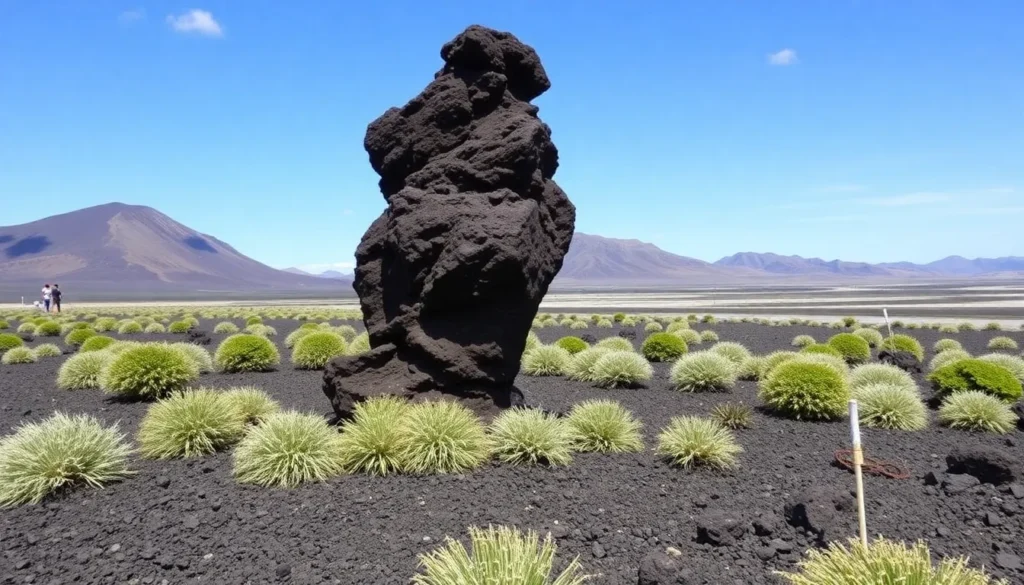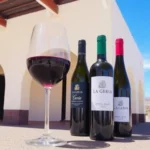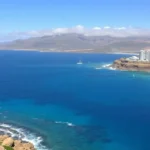10 fascinating facts about Lanzarote you may not know

- 1. Home to one of the longest volcanic tubes in the world
- 2. A cinematic paradise
- 3. Unique volcanic vineyards
- 4. Where nature meets art
- 5. The island's vibrant green lagoon
- 6. Walking inside a volcano
- 7. Dining on volcanic heat
- 8. Gaze from a "funny" viewpoint
- 9. An underwater museum
- 10. Cochineal and salt: nature's gold
Mountains of fire, green lagoons, lava fields, cactus gardens, and so much more. Lanzarote is one of the most explosive, beautiful, and fascinating islands of the Canary Islands. To delve into its lesser-known side, this article will unveil 10 intriguing facts about Lanzarote that you might not have known. These lanzarote facts will surely enhance your understanding of this unique island.
Are you ready to embark on this journey? Let’s go!
1. Home to one of the longest volcanic tubes in the world
Lanzarote boasts one of the longest volcanic tubes globally, stretching nearly 7 kilometers. Located in the northern part of the island, it formed after the eruption of the Corona Volcano. Interestingly, the last part of this tube, measuring at least 1.5 kilometers, is submerged underwater, making it the longest underwater tube in existence, aptly named the Atlantis Tunnel.
The Cueva de los Verdes and the Jameos del Agua are two of Lanzarote's most famous attractions, and they are interconnected through this unique tunnel. Exploring these sites offers an unparalleled opportunity to witness the island's geological history up close, highlighting fascinating lanzarote facts.
2. A cinematic paradise
In Lanzarote, you don’t need to stretch your imagination to feel like you’re on another planet. The landscapes shaped by the monumental eruptions from 1730 to 1736 leave an almost extraterrestrial mark on the island, a fact that hasn't gone unnoticed by many film directors.
Some notable films shot here include:
- In the Heart of the Sea, based on the novel Moby Dick
- A Million Years Ago
- Journey to the Center of the Earth
- Treasure Island
- Broken Embraces
- Clash of the Titans
These cinematic masterpieces showcase the otherworldly beauty of Lanzarote, making it a favorite location for filmmakers seeking stunning backdrops. This also adds to the list of incredible lanzarote facts that many visitors might find surprising.
3. Unique volcanic vineyards
In the region of La Geria, you’ll find one of the most unusual wine regions in the world, known for its spectacular Volcanic Malvasía. After the devastating eruptions that reshaped the island, an astute individual discovered that the ash retained soil moisture, ideal for vine cultivation.
This realization transformed the landscape into a unique field of holes and walls made from volcanic rock, creating a visually striking environment. Here are some key features that make these vineyards stand out:
- Crater-shaped planting pits that protect the vines from wind.
- Natural irrigation thanks to the volcanic ash.
- Rich volcanic soil that enhances the flavor profile of the wine.
We find this one of the most astonishing curiosities about Lanzarote, adding to the rich tapestry of lanzarote facts!
4. Where nature meets art
A significant contributor to Lanzarote’s artistic landscape is the renowned César Manrique. He played a pivotal role in reimagining his beloved island, ensuring that incredible spaces like Jameos del Agua and Mirador del Río integrated his artistic vision, making them even more beautiful, interesting, and unique.
Other notable sites showcasing Manrique's influence include the Cactus Garden, the Monument to the Farmer, and his House Museum, each echoing his commitment to blending natural beauty with artistic expression, a testament to the creative spirit found in lanzarote facts.
5. The island's vibrant green lagoon
To the south, near Los Hervideros, lies one of the island's most curious tourist spots: the Laguna de los Clicos. Its defining feature is the intense green color that contrasts starkly with the red and black of the surrounding land and the blue of the Atlantic Ocean.
What causes this vibrant green hue? The presence of algae and sulfur in the water contributes to this extraordinary spectacle, making it a must-see for visitors. This unique feature adds to the fascinating lanzarote facts that highlight the island's natural wonders.
6. Walking inside a volcano
Did you know you can walk inside a volcano in Lanzarote? The Cuervo Volcano, located just a short distance from the Timanfaya National Park, offers this unique experience. The trail to the crater is only 3 kilometers long and has minimal elevation gain, making it accessible for most visitors.
For those looking for a more challenging hike, another highly recommended trail leads to the top of the Caldera Blanca Volcano, which provides breathtaking views and a more immersive experience. These activities are just some of the thrilling lanzarote facts that adventure seekers will appreciate.
7. Dining on volcanic heat
There aren’t many places in the world where you can eat chicken (or whatever you prefer) cooked using the geothermal heat from the heart of the earth. You can indulge in this unique culinary experience at the El Diablo Restaurant, located in Timanfaya National Park.
Here, dishes are prepared using the natural heat from volcanic activity, making for an unforgettable dining experience amidst stunning landscapes. This unique aspect is one of the most delicious lanzarote facts to savor!
8. Gaze from a "funny" viewpoint
The Mirador del Río, another monumental work of Manrique, is the best spot on the island to enjoy breathtaking views of La Graciosa. Perched approximately 500 meters above sea level at the Risco de Famara, the panoramas are truly awe-inspiring.
If you have time, we highly recommend spending a few days on this nearby tranquil island, where asphalt roads are yet to be built, and life seems to stand still. Access is via ferry or you can join a tour like this one.
9. An underwater museum
Just off the coast of Playa Blanca lies one of the most unique museums in all of Europe: the Atlantic Museum, where you literally have to get wet!
The statues created by artist Jason DeCaires rest on the seabed at a depth of about 12-15 meters. Check out their website to be amazed! This underwater experience is among the intriguing lanzarote facts that attract divers and art lovers alike.
10. Cochineal and salt: nature's gold
The island's economy has long been sustained by two products directly from nature: cochineal and salt.
Cochineal are parasites that feed on the leaves of prickly pears (Opuntia Ficus Indica). Once dried and boiled, they produce a crimson liquid that became well-known in the dye industry.
As for the salt, it was historically used for food preservation and was one of the island’s main sources of income until the advent of refrigeration. Today, only the Janubio Salt Flats, located in southern Lanzarote, remain operational.
Another renowned product is aloe vera. Due to its numerous health benefits, it is now one of the most cherished items among tourists and locals alike. Various plantations across the islands produce creams, soaps, mineral salts, jams, juices, and even liqueurs, showcasing yet another facet of lanzarote facts.
We hope this post about curiosities of Lanzarote has entertained you and that you now know a little more about this peculiar Canary Island. With these fascinating lanzarote facts, we are already looking forward to returning!
| Save on your trip |
| Compare and find cheap flights here |
| Find accommodation at the best prices here |
| Book activities and tours in Spanish here |
| Get a 5% discount on your travel insurance IATI here |
| Book airport transfers here |
| Receive a 10€ gift when booking transport across Europe here |
| Learn how to withdraw money without fees here |
| 5% discount on your eSIM from Holafly here |
| Rent a car with the best deals here |
| Compare prices for van rentals here |
| The best books and travel guides here |
| All our articles about Spain |






Deja una respuesta